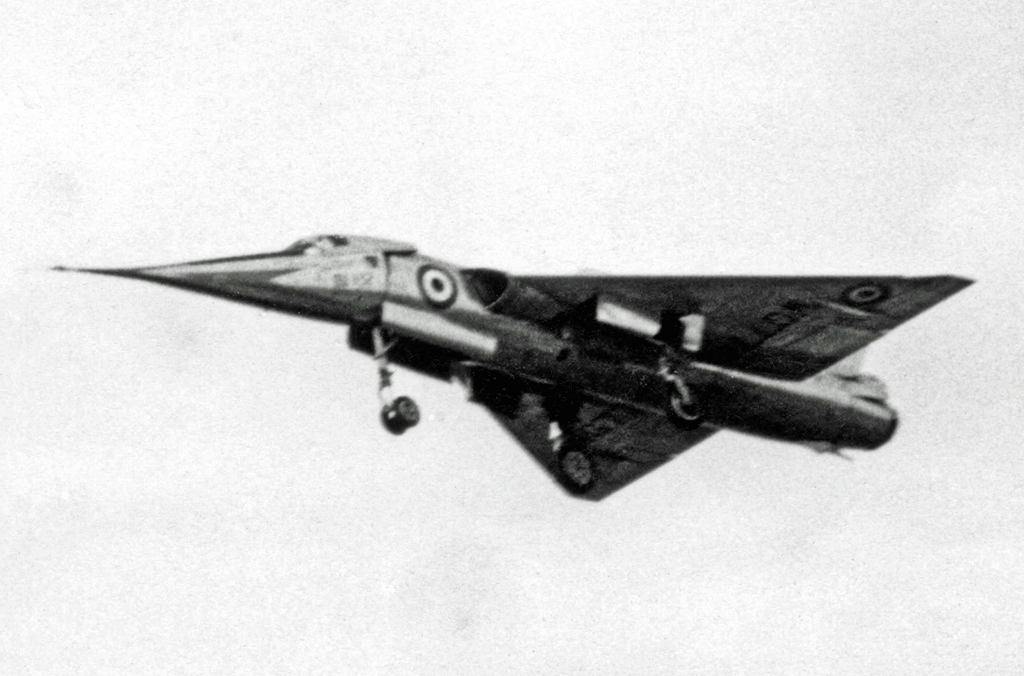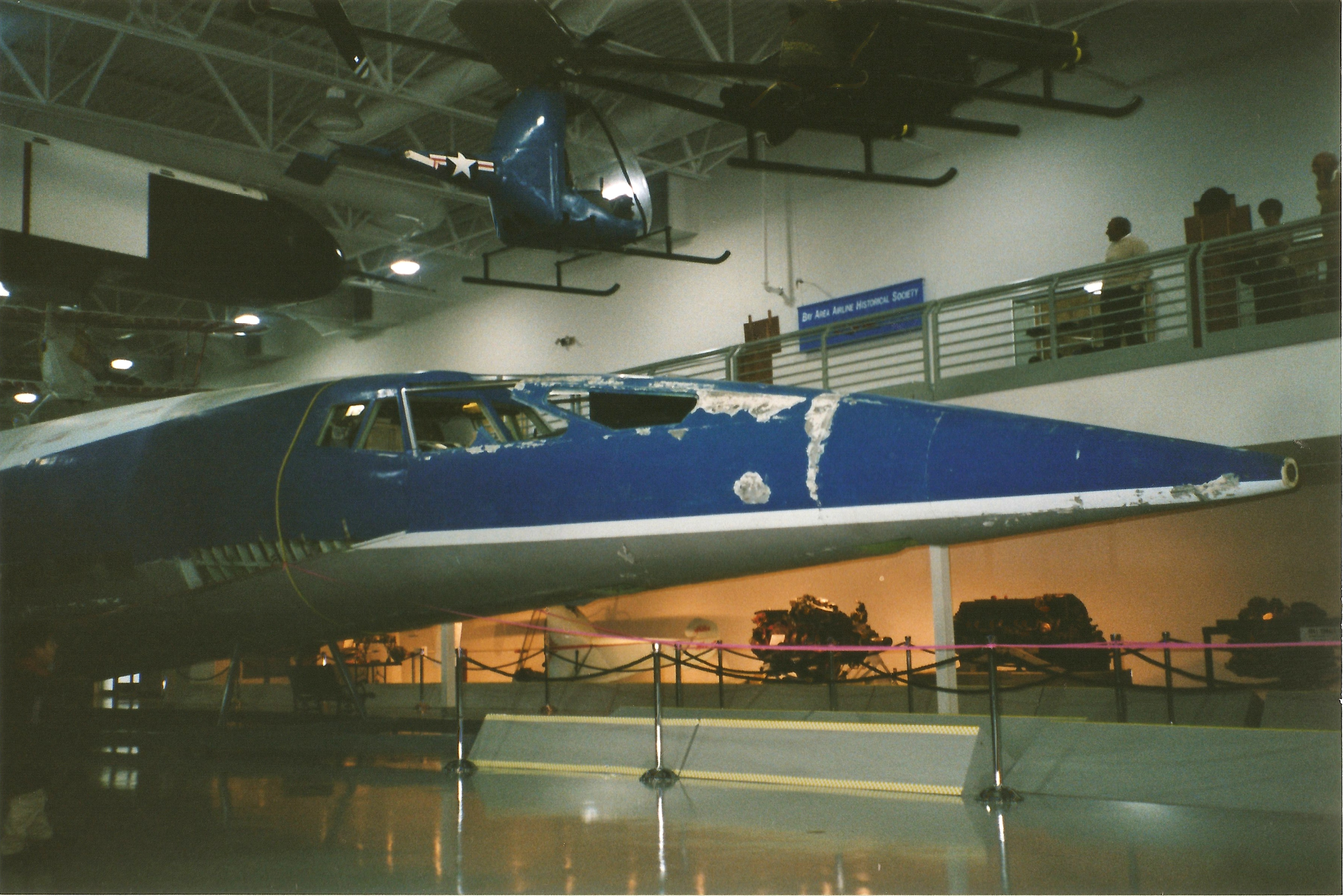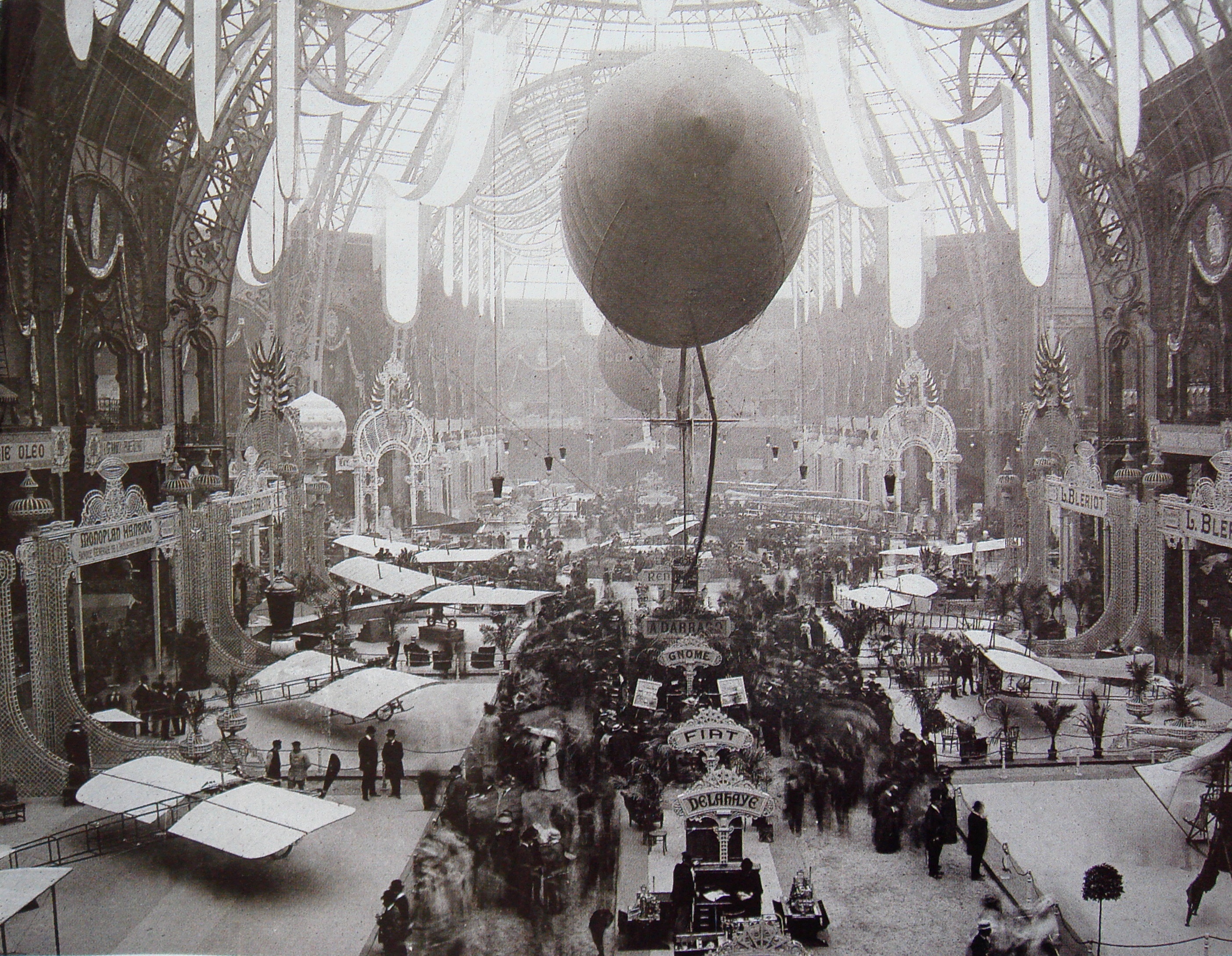|
Bristol Type 223
The Bristol Type 223 was an early design for a supersonic transport. In the late 1950s and early 1960s the Bristol Aeroplane Company studied a number of models as part of a large British inter-company effort funded by the government. These models eventually culminated in the Type 223, a transatlantic transport for about 100 passengers at a speed around Mach 2. At about the same time Sud Aviation in France was developing the similar Super-Caravelle design, and in November 1962 the efforts were merged to create the Concorde project. Development Background In the UK, as elsewhere in the 1950s, the aero industry had been producing a series of supersonic test aircraft and had extensively studied the problems of sustained high-speed flight. By the mid-1950s, two designs had been shown to have a lift-to-drag ratio suitable for supersonic cruise, a sharply swept M-wing pioneered at Armstrong-Whitworth for slightly-supersonic flight and very slender delta wings suitable for a wide ... [...More Info...] [...Related Items...] OR: [Wikipedia] [Google] [Baidu] |
Supersonic Transport
A supersonic transport (SST) or a supersonic airliner is a civilian supersonic aircraft designed to transport passengers at speeds greater than the speed of sound. To date, the only SSTs to see regular service have been Concorde and the Tupolev Tu-144. The last passenger flight of the Tu-144 was in June 1978 and it was last flown in 1999 by NASA. Concorde's last commercial flight was in October 2003, with a November 26, 2003 ferry flight being its last airborne operation. Following the permanent cessation of flying by Concorde, there are no remaining SSTs in commercial service. Several companies have each proposed a supersonic business jet, which may bring supersonic transport back again. Supersonic airliners have been the objects of numerous recent and ongoing design studies. Drawbacks and design challenges are excessive noise generation (at takeoff and due to sonic booms during flight), high development costs, expensive construction materials, high fuel consumption, extremel ... [...More Info...] [...Related Items...] OR: [Wikipedia] [Google] [Baidu] |
Ogee
An ogee ( ) is the name given to objects, elements, and curves—often seen in architecture and building trades—that have been variously described as serpentine-, extended S-, or sigmoid-shaped. Ogees consist of a "double curve", the combination of two semicircular curves or arcs that, as a result of a point of inflection from concave to convex or ''vice versa'', have ends of the overall curve that point in opposite directions (and have tangents that are approximately parallel). First seen in textiles in the 12th century, the use of ogee elements—in particular, in the design of arches—has been said to characterise various Gothic and Gothic Revival architectural styles. The shape has many such uses in architecture from those periods to the present day, including in the ogee arch in these architectural styles, where two ogees oriented as mirror images compose the sides of the arch, and in decorative molding designs, where single ogees are common profiles (see opening image) ... [...More Info...] [...Related Items...] OR: [Wikipedia] [Google] [Baidu] |
Handley Page HP
Handley may refer to: Places In the United Kingdom *Handley, Cheshire, a village *Handley, a hamlet in the parish of Stretton, Derbyshire *Middle Handley, a hamlet in the parish of Unstone, Derbyshire *Nether Handley, a hamlet in the parish of Unstone, Derbyshire *West Handley, a hamlet in the parish of Unstone, Derbyshire *Handley, a village in Dorset now known as Sixpenny Handley In the United States *Handley, Dallas County, Missouri *Handley (Fort Worth), a former town currently located with the city of Fort Worth, Texas *Handley, West Virginia *John Handley High School, Winchester, Virginia Other uses *Handley (surname) *Handley Page H.P.42 The Handley Page H.P.42 and H.P.45 were four-engine biplane airliners designed and manufactured by British aviation company Handley Page, based in Radlett, Hertfordshire. It held the distinction of being the largest airliner in regular use in ..., British four-engine long-range biplane airliners in service from 1931 to 1940 See also ... [...More Info...] [...Related Items...] OR: [Wikipedia] [Google] [Baidu] |
Fairey Delta 2
The Fairey Delta 2 or FD2 (internal designation Type V within Fairey) is a British supersonic research aircraft that was produced by the Fairey Aviation Company in response to a specification from the Ministry of Supply for a specialised aircraft for conducting investigations into flight and control at transonic and supersonic speeds. Features included a delta wing and a drooped nose. On 6 October 1954, the Delta 2 made its maiden flight, flown by Fairey test pilot Peter Twiss; two aircraft would be produced. The Delta 2 was the final aircraft to be produced by Fairey as an independent manufacturer. The Fairey Delta 2 was the first jet aircraft to exceed in level flight. On 10 March 1956, it set a new world speed record of , exceeding the previous official record by . The Delta 2 held the absolute World Air Speed Record for over a year. It continued to be used for flight testing, and was allocated to the Royal Aircraft Establishment (RAE) in 1958. A testbed aircraft was requi ... [...More Info...] [...Related Items...] OR: [Wikipedia] [Google] [Baidu] |
Tupolev Tu-144
The Tupolev Tu-144 (russian: Tyполев Ту-144; NATO reporting name: Charger) is a Soviet supersonic passenger airliner designed by Tupolev in operation from 1968 to 1999. The Tu-144 was the world's first commercial supersonic transport aircraft with its prototype's maiden flight from Zhukovsky Airport on 31 December 1968, two months before the British-French Concorde. The Tu-144 was a product of the Tupolev Design Bureau, an OKB headed by aeronautics pioneer Aleksey Tupolev, and 16 aircraft were manufactured by the Voronezh Aircraft Production Association in Voronezh. The Tu-144 conducted 102 commercial flights, of which only 55 carried passengers, at an average service altitude of and cruised at a speed of around ( Mach 2). The Tu-144 first went supersonic on 5 June 1969, four months before Concorde, and on 26 May 1970 became the world's first commercial transport to exceed Mach 2. Reliability and developmental issues, together with repercussions of the 1973 Paris Air S ... [...More Info...] [...Related Items...] OR: [Wikipedia] [Google] [Baidu] |
Lockheed L-2000
The Lockheed L-2000 was Lockheed Corporation's entry in a government-funded competition to build the United States' first supersonic airliner in the 1960s. The L-2000 lost the contract to the Boeing 2707, but that competing design was ultimately canceled for political, environmental and economic reasons. In 1961, President John F. Kennedy committed the government to subsidizing 75% of the development of a commercial airliner to compete with the Anglo-French Concorde then under development. The director of the Federal Aviation Administration (FAA), Najeeb Halaby, elected to improve upon the Concorde's design rather than compete head-to-head with it. The SST, which might have represented a significant advance over the Concorde, was intended to carry 250 passengers (a large number at the time, more than twice as many as Concorde), fly at Mach 2.7-3.0, and have a range of 4,000 mi (7,400 km). The program was launched on June 5, 1963, and the FAA estimated that by ... [...More Info...] [...Related Items...] OR: [Wikipedia] [Google] [Baidu] |
Boeing 2707
The Boeing 2707 was an American supersonic passenger airliner project during the 1960s. After winning a competition for a government-funded contract to build an American supersonic airliner, Boeing began development at its facilities in Seattle, Washington. The design emerged as a large aircraft with seating for 250 to 300 passengers and cruise speeds of approximately Mach 3. It was intended to be much larger and faster than competing supersonic transport (SST) designs such as Concorde. The SST was the topic of considerable concern within and outside the aviation industry. From the start, the airline industry noted that the economics of the design were questionable, concerns that were only partially addressed during development. Outside the field, the entire SST concept was the subject of considerable negative press, centered on the issue of sonic booms and effects on the ozone layer. A key design feature of the 2707 was its use of a swing wing configuration. During developm ... [...More Info...] [...Related Items...] OR: [Wikipedia] [Google] [Baidu] |
Rolls-Royce/Snecma Olympus 593
The Rolls-Royce/Snecma Olympus 593 was an Anglo-French turbojet with reheat (afterburners), which powered the supersonic airliner Concorde. It was initially a joint project between Bristol Siddeley Engines Limited (BSEL) and Snecma, derived from the Bristol Siddeley Olympus 22R engine."Olympus-the first forty years" Alan Baxter, RRHT No15, , p. 135. Rolls-Royce Limited acquired BSEL in 1966 during development of the engine, making BSEL the Bristol Engine Division of Rolls-Royce. Until regular commercial flights by Concorde ceased, in October 2003, the Olympus turbojet was unique in aviation as the only turbojet with reheat powering a commercial aircraft. The overall thermal efficiency of the engine in supersonic cruising flight (supercruise) was about 43%, which at the time was the highest figure recorded for any normal thermodynamic machine."Not Much of an Engineer" Sir Stanley Hooker An Autobiography, , p. 154. Development The initial design of the engine was a ... [...More Info...] [...Related Items...] OR: [Wikipedia] [Google] [Baidu] |
Geoffrey De Courcel
Geoffrey, Geoffroy, Geoff, etc., may refer to: People * Geoffrey (name), including a list of people with the name * Geoffroy (surname), including a list of people with the name * Geoffrey of Monmouth (c. 1095–c. 1155), clergyman and one of the major figures in the development of British history * Geoffrey I of Anjou (died 987) * Geoffrey II of Anjou (died 1060) * Geoffrey III of Anjou (died 1096) * Geoffrey IV of Anjou (died 1106) * Geoffrey V, Count of Anjou (1113–1151), father of King Henry II of England * Geoffrey II, Duke of Brittany (1158–1186), one of Henry II's sons * Geoffrey, Archbishop of York (c. 1152–1212) * Geoffroy du Breuil of Vigeois, 12th century French chronicler * Geoffroy de Charney (died 1314), Preceptor of the Knights Templar * Geoffroy IV de la Tour Landry (c. 1320–1391), French nobleman and writer * Geoffrey the Baker (died c. 1360), English historian and chronicler * Geoffroy (musician) (born 1987), Canadian singer, songwriter and multi-instrumen ... [...More Info...] [...Related Items...] OR: [Wikipedia] [Google] [Baidu] |
Julian Amery
Harold Julian Amery, Baron Amery of Lustleigh, (27 March 1919 – 3 September 1996) was a British Conservative Party politician, who served as a Member of Parliament (MP) for 39 of the 42 years between 1950 and 1992. He was appointed to the Privy Council in 1960. Amery was created a life peer upon his retirement from the House of Commons in 1992. For three decades, he was a leading figure in the Conservative Monday Club. He was the son-in-law of Conservative prime minister Harold Macmillan. His brother, John, was hanged for high treason for supporting Nazi Germany and Fascist Italy during the Second World War. Early and family life Amery was born in Chelsea, London. His father was Leo Amery, a British statesman and Conservative politician. He was educated at Eaton House, Summer Fields School, Eton College and Balliol College, Oxford. While an undergraduate, he had a brief romance with the future novelist Barbara Pym, who was six years his senior. Military service Before the ... [...More Info...] [...Related Items...] OR: [Wikipedia] [Google] [Baidu] |
Paris Air Show
The Paris Air Show (french: Salon international de l'aéronautique et de l'espace de Paris-Le Bourget, Salon du Bourget) is a trade fair and air show held in odd years at Paris–Le Bourget Airport in north Paris, France. Organized by the French aerospace industry's primary representative body, the ''Groupement des industries françaises aéronautiques et spatiales'' (GIFAS), it is the largest air show and aerospace-industry exhibition event in the world, measured by number of exhibitors and size of exhibit space, followed by UK's Farnborough Air Show, Dubai Air Show, and Singapore Airshow. First held in 1909, the Paris Air Show was held every odd year from 1949 to 2019, when the 53rd Air Show attracted 2,453 exhibitors from 49 countries and occupied more than 125,000 square meters. Organizers canceled the 2021 show due to the COVID pandemic and said it would resume in 2023. It is a large trade fair, demonstrating military and civilian aircraft, and is attended by many military ... [...More Info...] [...Related Items...] OR: [Wikipedia] [Google] [Baidu] |
Bristol Olympus
The Rolls-Royce Olympus (originally the Bristol B.E.10 Olympus) was the world's second two- spool axial-flow turbojet aircraft engine design, first run in May 1950 and preceded only by the Pratt & Whitney J57, first-run in January 1950. It is best known as the powerplant of the Avro Vulcan and later models in the Concorde SST. The design dates to a November 1946 proposal by Bristol Aeroplane Company for a jet-powered bomber, powered by four new engines which would be supplied by Bristol Aero Engines. Although their bomber design was ultimately cancelled in favour of the other V bombers, the engine design's use of twin-spool layout led to continued interest from the Air Ministry and continued development funding. The engine first ran in 1950 and quickly outperformed its design goals. Initially used in the Vulcan, later versions added reheat for use in the supersonic BAC TSR-2. Bristol Aero Engines merged with Armstrong Siddeley Motors in 1959 to form Bristol Siddeley Engines ... [...More Info...] [...Related Items...] OR: [Wikipedia] [Google] [Baidu] |



.jpg)

_last_flight.jpg)

